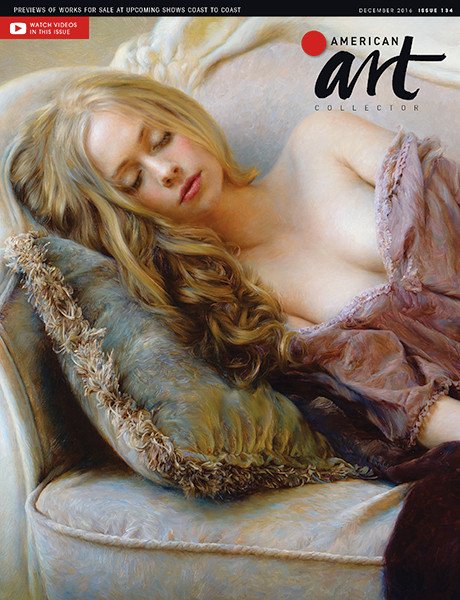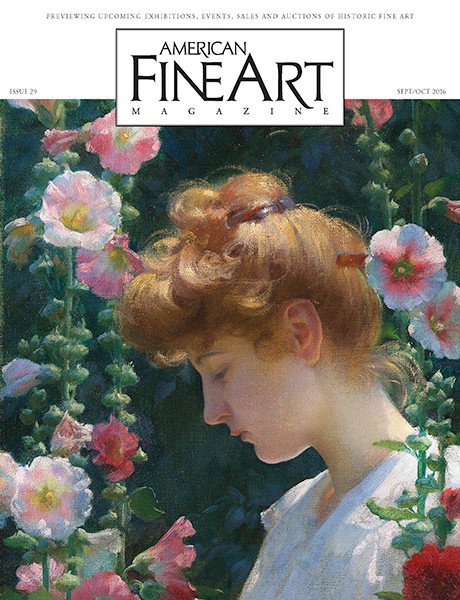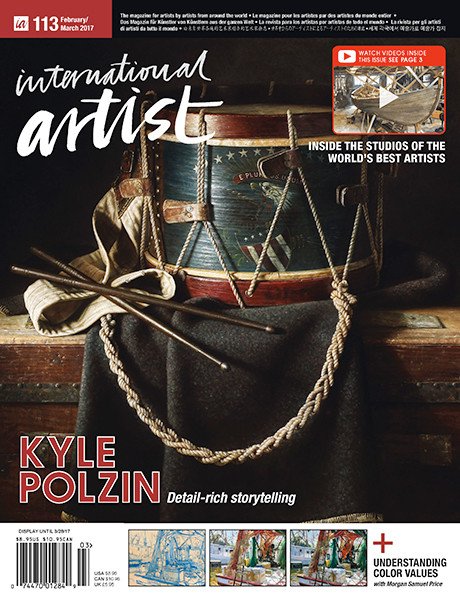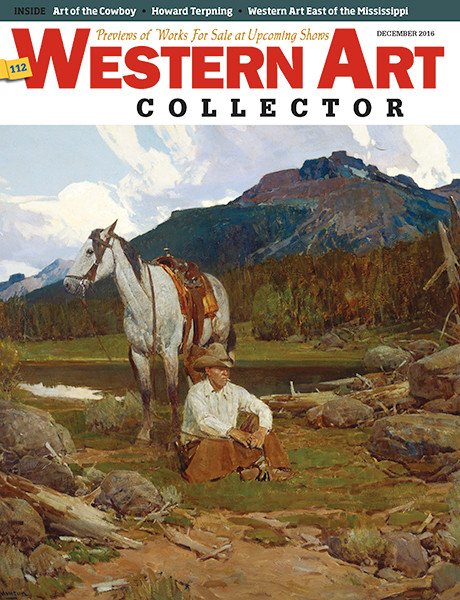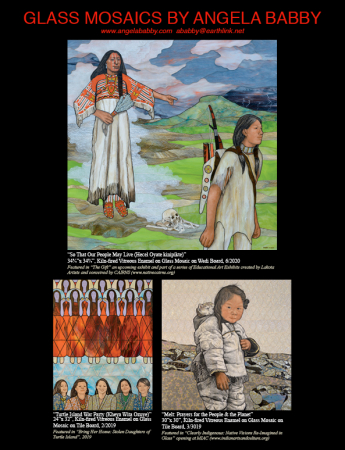Angela Babby
1735 Augsburg Dr.Billings, Mt 59105
406-672-2949
Email this Gallery
Visit Gallery Website
Angela Babby
7/16/2020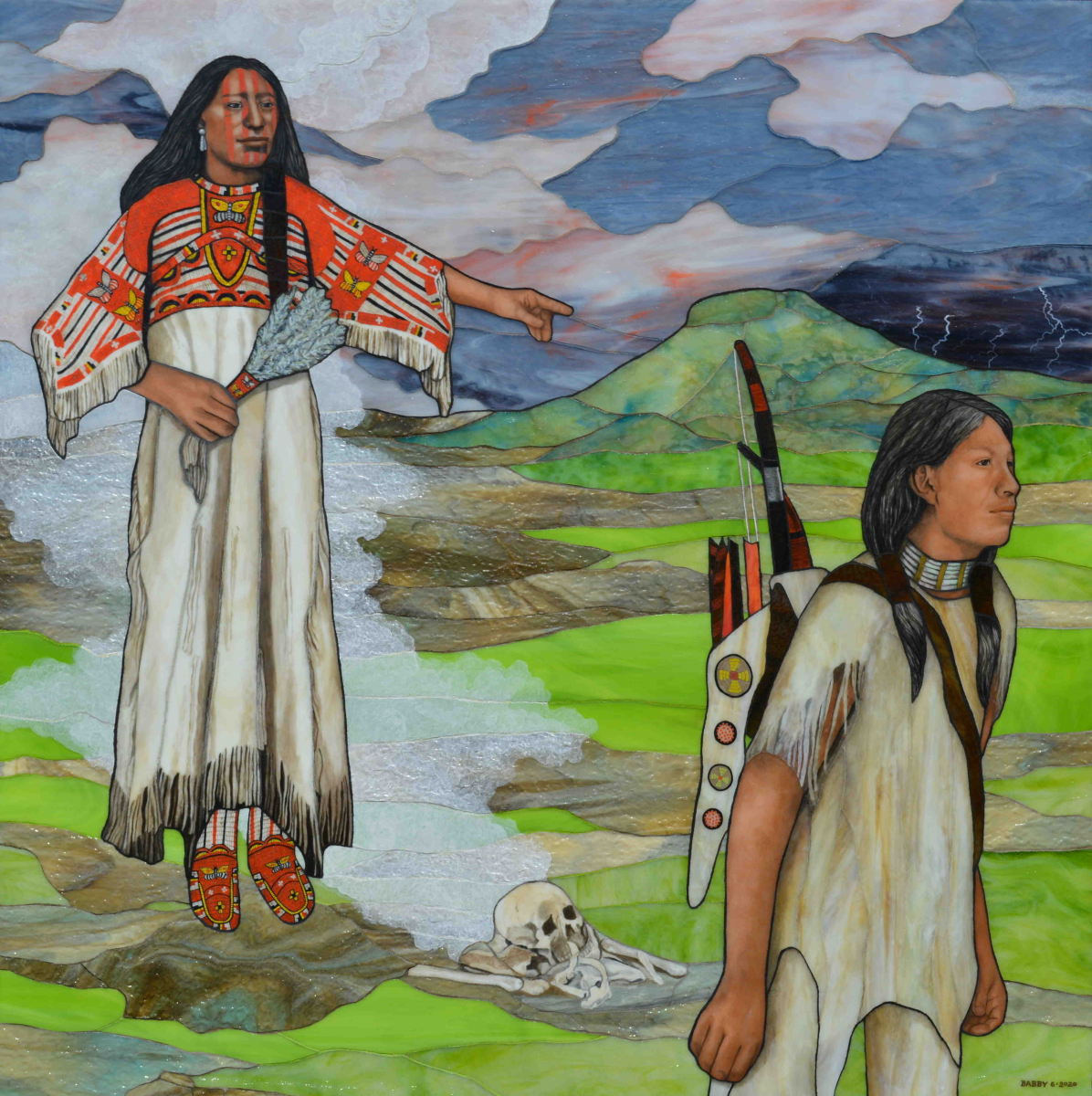
"So That Our People May Live (Hecel Oyate kinipikte)"
Angela Babby
Kiln-fired Vitreous Enamel on Glass Mosaic on Wedi Board
34.75 x 34.75 x 1 inches (L x W x D)
When Craig Howe asked me to be part of “The Wish” Exhibit, there was no doubt I would participate, and that it would require my utmost effort to honor the subject of the show. When Craig offers the opportunity to join an exclusive group of top artists to tell the oldest written story of White Buffalo Calf Woman in another of his acclaimed series of educational exhibits, you know what the answer must be.
When I started the design and began to think about Ptesanwin (White Buffalo Calf Woman), I knew I wanted her to be in a quill-work dress. I wanted to represent the artistry and community effort required to produce this kind of exquisite wearable art. Dresses like these take thousands of hours of work including shooting the elk, tanning the hide, cutting the patterns and fringe, obtaining and dyeing the porcupine quills, designing motifs all to carefully and respectfully use materials of the natural world to express ideas. This dress speaks of that community and the individuals desire to express reverence for nature and her gifts. I found this one on the internet created by an unknown artist about 100 years ago. Garments of this vintage are rarely seen due to their composition; the hide, quill-work and sinew go quickly back to the earth if not carefully preserved. The Art and Culture that was lost during the sweeping waves of disease throughout the Americas with the arrival of Europeans should be remembered and honored. Glass mosaic is one of the strongest, longest lived mediums in the art world and it thrills me to preserve our culture with it. The longer I studied this dress and its butterfly design, the more I wanted to use it in my artwork. The butterfly signifies transformation. We all became involuntarily involved in the complete transformation of our lives in 2020. In an abstract way, I think the dress makes her look like a monarch butterfly, a symbol of hope for me.
The look on the young man’s face is one of determination to carefully remember the message; detailing what had occurred and what the people must do to prepare for her. He had an extremely important message to deliver so that the people could receive the gift and survive. I included the covid-19 virus on the boys quiver design to express the quintessential power of nature. The design of his quiver is from a Bodmer drawing to record some of the oldest renderings of native wearable art. I have added articles of jewelry and my own concept of what her sage fan would look like.
In the background is Thunder Butte (Wakinyan Paha) which is close to Green Grass (Peji To) in North Dakota where White Buffalo Calf Woman is said to have appeared to give the gift of the pipe to the people. In July 2019 I was driving across South Dakota to teach a class to college bound students for the Oscar Howe Summer Art Institute at USD in Vermillion. It was an amazing clover year! Rains had turned the badlands vivid lime green creating a dramatic and surreal landscape. I used this memory as inspiration for my work.
When I began working on my artwork “So That Our People May Live (Hecel Oyate kinipikte)” I wasn’t sure what the sky or the land should look like. I did not know anything about Thunder Butte and a friend, Jordan Curnutt, sent a picture of the location with the lightening. This element turned out to be a critical piece of the design. I have learned so much though my participation in Craig Howes series of educational exhibits.
My friend, Jhon Goes In Center, was kind enough to discuss the artwork and subject matter with me, to determine the right title. I have never been to a sundance, but Jhon said that a common refrain uttered between the people participating in the sundance is “Hecel Oyate kinipikte”. I use the lakota translation to respect those who are doing the important work of preserving our language. I unfortunately do not speak it but “So That Our People May Live” struck me as the absolute right title for the work. The idea of living your life to benefit and respect others to search for the path which brings wisdom and meaning to you is very important to me. Art constantly leads me along a difficult but fulfilling road. I usually work alone but in this case Craig, Jhon and Jordan offered their ideas to me and made it work. I sincerely thank them for their assistance in this artwork.
Craig Howe directs CAIRNS (Center for American Indian Research and Native Studies) https://www.nativecairns.org
